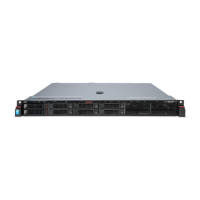
Do you have a question about the Allot SG-9100 and is the answer not in the manual?
| Power Supply | Dual hot-swappable power supplies |
|---|---|
| Input Voltage | 100-240 VAC, 50/60 Hz |
| Operating Temperature | 0°C to 40°C |
| Storage Temperature | -40°C to 70°C |
| Supported Protocols | TCP, UDP, HTTP, HTTPS, DNS, SIP |
| Security Features | Firewall |
| Management | Web UI, CLI, SNMP, REST API |
| Form Factor | 1U rackmount |
Guidance on planning the installation and deployment of the SG-9100 system for optimal performance.
Details the items included with the SG-9100 system for verification upon receipt.
Information on various cable types and transceivers required for connecting the SG-9100.
Lists and describes the compatible optical and copper transceivers for the SG-9100.
Explains the different types of connectors used on the SG-9100 and its bypass units.
Verifies the contents of the SG-9100 package, including the main unit and accessories.
Describes the physical layout and components of the SG-9100's front panel, including buttons and LEDs.
Details the function and status indicators of the front panel buttons and LEDs on the SG-9100.
Explains the availability and purpose of any connectors present on the SG-9100's front panel.
Illustrates and identifies the various ports and connectors located on the rear of the SG-9100 unit.
Details the network and other interface connectors on the SG-9100 rear panel and their usage.
Describes the tool used for safely removing transceivers from the SG-9100's optical ports.
Explains the power supply configuration of the SG-9100, including redundancy features.
Details the status indication provided by the LEDs on the SG-9100's power supply units.
Introduces the external bypass unit and its role in ensuring network connectivity during subsystem failures.
Details the features and operation of the HD 8 Bypass Unit for fiber and copper interfaces.
Explains the LED indicators on the HD 8 Bypass Unit to understand its operational status.
Describes the HD 16 Bypass Unit, its port capacity, and its compatibility with the SG-9100.
Provides information on the LED indicators of the HD 16 Bypass Unit for status monitoring.
Details the front panel connectors of the HD 16 Fiber Bypass Unit, including network and system ports.
Explains the cabling required to connect the external bypass units to the SG-9100.
Outlines the essential requirements for power sources and installation to ensure safe operation of the SG-9100.
Specifies the necessary grounding procedures and standards for the SG-9100 installation.
Details the requirements for power cables and cords used with the SG-9100 for safe and reliable connection.
Provides specific details on the AC power cords, including type, rating, and connector specifications.
Guides users through the process of safely unpacking the SG-9100 equipment.
Provides instructions and considerations for physically mounting the SG-9100 unit.
Specifies the necessary clearances and ventilation requirements for installing the SG-9100 in a rack.
Details the procedures and safety precautions for securely mounting the SG-9100 in a standard equipment rack.
Explains the steps for connecting network traffic to the SG-9100 via the bypass unit.
Details how to set up active redundancy for high availability in network topologies.
Describes the physical connections for network traffic and redundancy between SG-9100 units.
Illustrates and explains the port configuration and usage on the SG-9100 for various network links.
Outlines the methods for configuring the SG-9100, including GUI and CLI options.
Provides instructions on how to properly power on the SG-9100 unit for the first time.
Guides users through the initial setup and configuration steps for the SG-9100.
Explains how to connect an external monitor to the SG-9100's monitor port for direct access.
Details how to access and manage the SG-9100 using the ThinkServer System Manager (TSM).
Provides steps for configuring the network settings of the TSM module for remote management.
Describes the information presented on the TSM System Status screen for monitoring the SG-9100.
Explains how to launch and use the remote console for accessing the SG-9100 command-line interface.
Provides CLI commands for configuring IP address, gateway, DNS, and NTP settings on the SG-9100.
Instructions on how to disable 1G copper interfaces on the SG-9100 via CLI commands.
Details how to configure management ports for network traffic on the SG-9100.
Guides users on changing the default sysadmin and admin passwords for enhanced security.
Presents detailed technical specifications of the SG-9100 unit and its external bypass units.
Lists the operating temperature, humidity, and altitude limits for the SG-9100.
Covers the normative standards and safety certifications that the SG-9100 complies with.
Details the environmental compliance certifications, such as RoHS and WEEE.
Outlines safety requirements and precautions related to the laser devices used in the SG-9100.
Explains the laser classification of SFP+ modules and the overall hazard level in the SG-9100.
Directs users to system specifications for details on available laser transmitters.
Provides critical warnings and precautions for personnel working with laser devices.
Emphasizes the requirement for trained personnel and the role of a laser safety officer.
Lists specific precautions to observe when operating equipment with laser devices to prevent injury.